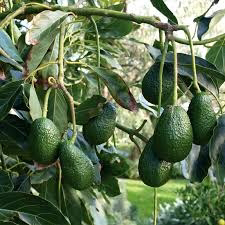Banana Propagation
The inside of a banana is composed of several fleshy, cream-colored segments, which are surrounded by thin, white membranes. The flesh of the banana is soft, slightly sweet, and has a slightly sticky texture.
Bananas are one of the most popular and widely grown fruits in the world, with their largest production occurring in countries near the equator. They thrive in tropical and subtropical climates and are commonly grown in India, China, the Philippines, Ecuador, Brazil, Uganda, Colombia, Indonesia, Cameroon, and Honduras. However, this is not an exhaustive list, as bananas are also grown in other tropical and subtropical regions, including parts of Africa, South America, and Southeast Asia. The specific areas where bananas are grown can vary based on local growing conditions, including temperature, rainfall, soil type, and market demand.
Uses & Benefits
Bananas are a good source of vitamins and minerals, including vitamin C, vitamin B6, and potassium, and are often used as a healthy snack or ingredient in smoothies and other foods.The fruit is the most widely used part of the plant and can be eaten fresh or cooked or processed into starch, chips, puree, beer, vinegar or dehydrated to produce dried fruit. The fruit may also be processed into flour which is used in baking, soups or beverages. The flowers of the plant may be used as a vegetable. Fresh leaves have a high protein content and can be fed to cattle. Other uses for leaves include polishing floors, lining pots or wrapping food.
Varieties of Bananas
There are many different varieties of bananas, ranging in size, color, flavor, and texture. Some of the most common and widely grown varieties include:
- Cavendish: This is the most common variety of banana found in grocery stores and is known for its sweet flavor and yellow skin.
- Plantain: Plantains are a type of banana that is larger and less sweet than Cavendish bananas. They are typically used for cooking and are a staple food in many countries in Africa, South America, and Southeast Asia.
- Red Banana: This variety of banana is smaller and sweeter than the Cavendish and has a red or pink skin when ripe.
- Lady Finger Banana: This variety of banana is smaller and sweeter than the Cavendish and is a popular snack in many countries.
- Blue Java Banana: This variety of banana is also known as the "Ice Cream Banana" due to its creamy texture and sweet flavor. It has a blue-green skin when ripe.
- Musa Basjoo: This is a hardy banana variety that is native to Southeast Asia and can grow in cold climates. It has a green skin and a sweet, slightly tart flavor improve air circulation.
Harvesting
Banana harvesting is the process of collecting ripe or near-ripe bananas from the plant. The timing of the harvest is crucial, as it will determine the quality of the fruit and its intended use. To harvest bananas, one must first identify when the fruit is mature, which can be determined by observing signs such as yellowing of the fruit and leaves. Once the bananas are ready to be harvested, a sharp, clean knife should be used to cut the stem of the banana bunch from the plant. It's important to handle the bananas carefully to avoid bruising, and to gently place them in a container or on a flat surface for transport. If the bananas are harvested when they are still green, they will need to be ripened before eating by placing them in a warm, well-ventilated area until they are yellow and soft to the touch. Ripe bananas can be stored at room temperature for a few days or in the refrigerator to slow down the ripening process. The exact procedures for harvesting bananas may vary depending on the variety of banana being grown and local growing conditions. It's recommended to work with local agriculture experts, such as those from PlantVillage, to ensure the best harvesting and handling practices for your specific situation.



Comments
Post a Comment